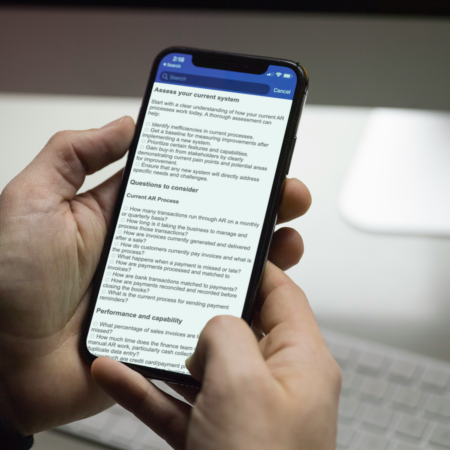
How to trust your numbers and know your business is providing a reliable picture of performance
You stare at last month’s recurring revenue numbers and wonder if you can justify a major investment in new product development. But the rows and rows of data aren’t giving you what you need. For one, the report came in late, which leaves you little time for analysis. On top of that, you’re not confident in the accuracy of the numbers.
For finance and business leaders making big-dollar decisions based on financial reports, this is an all-too-familiar dilemma. Businesses rely on key accounting reports like the P&L statement, trial balance, and balance sheet to provide a high-level view of company performance on a regular basis. Insights into revenue trends, cash availability, liabilities, and growth patterns are critical to planning.
Yet it’s widely accepted that financial reports are not accurate, not delivered fast enough, nor easy to understand. As many as half of senior finance professionals do not fully trust the financial data they are working with, while the average financial close takes more than eight days. Though 98% of CFOs have invested in digitization and automation, most report that less than a quarter of their processes are automated—unnecessarily slowing the generation of crucial reports.
The push for better solutions continues to rise, with 58% of CFOs increasing their technology investments compared to last year. It’s becoming essential to deliver accurate financial information to stakeholders on time. With the right tech stack, you can dramatically improve the quality of your financial reports.
Let’s take a look at three practical steps to get your financial reporting where it needs to be, starting with the most basic premise: reliable data.
3 steps to fast and accurate financial reporting
1. Create a foundation of clean, reliable data
Financial reports should arrive on your desk ready for analysis or better yet—already analyzed. Instead, 81% businesses still use spreadsheets for financial planning and analysis, which increases time and risk of inaccuracies as 94% of spreadsheets contain errors. The typical review process may involve a flurry of last-minute emails and texts among colleagues to verify numbers or require teams to spend hours checking Excel entries line by line.
The root cause? Data is living in two or more systems. A common setup is to have your customer interactions in a CRM platform like Salesforce, while your financial data lives in the “back” office on a separate piece of software like NetSuite, Sage, or Quickbooks.
This divide causes your data to be disconnected and means sales opportunities and financial transactions must either be manually copied or moved through third-party tools to register on your accounting platform, often resulting in integration breaks and syncing delays.
Bringing your company data together in a single place creates one version of the truth and eliminates these issues. Accounting Seed, for example, built its accounting app entirely within the software platform developed by Salesforce; it brings both accounting and sales data under the same roof, without integrations, providing accurate financial reporting in real-time.
In effect, this means everyone is literally working off the same data set. For example, When you update a customer record in sales it immediately updates in accounting because that record is one and the same. Many solutions claim to provide seamless integration for sales and financial data—but unless the data is on a single platform, it’s being “glued” together by integrations and syncing.
While 31% of finance professionals cite too many data sources as the cause of their distrust, a single source of truth provides confidence in the numbers and enables finance teams to focus on meaningful analysis.
Getting your data right isn’t optional, especially as finance teams look toward advanced automations and AI adoption. Poor data quality will undermine even the most sophisticated AI tools. But with clean, reliable data as your foundation, you can confidently adopt smarter solutions—which 65% of financial reporting leaders are already starting to do.
2. Replace manual accounting processes with automation
Business leaders need quick access to financial data, but their teams are stuck in the slow lane due to a reliance on manual accounting processes. Finance teams can spend up to 50% of their time wrangling spreadsheets, and 60% of teams still manually type invoices into their accounting software. In addition, 50% spend more than 10 hours weekly processing invoices and payments.
Automations can be built to replace these time-draining tasks. Instead of manually entering data or chasing down approvals in person, automated systems can handle these jobs faster and more precisely. Journals can post automatically to your general ledger, and approval requests can route digitally to the right manager.
This shift enables you to access financial data in real time. Imagine having the ability to peek at your financial health daily instead of waiting for month-end surprises. You can spot trends early, track key metrics throughout the month, and generate reports without manually gathering data.
Most companies currently need 25 days to complete an annual close—but with automation, you can cut this time dramatically while maintaining better visibility into your numbers.
3. Add advanced tools, analytics, and data visualization
There’s often a gap between the raw financial data generated and delivered by accounting teams and the ability of company leaders to be able to use it. That makes it difficult to prioritize the next step of making the data digestible and of use to leadership. This is a problem well-recognized by CFOs, 44% of whom are prioritizing data visualization and business intelligence tech advancements.
Modern analytics tools can bridge this divide by turning complex datasets into clear visuals. Interactive dashboards let you track key metrics instantly, while visual reports help spot patterns across products, regions, and market segments. Nearly half of finance teams expect AI will help flag anomalies and potential risks.
Well-designed visuals make it easier to:
- Compare performance across quarters and years
- Share financial insights with non-finance colleagues
- Spot opportunities hidden in the numbers
- Make faster, better-backed decisions
By adding these tools to your clean data foundation and automated processes, you give leaders the clear view they need—without the inherent confusion of spreadsheets.
Grow faster with accurate financial insights
Good financial reports should help you solve your most pressing business questions: How many new hires can we afford? Are we too dependent on a few big clients? Which products bring in the highest profits?
But these answers aren’t always easy to arrive at when your data lives scattered across different systems, manual processes drag out the delivery of reports, and no one can trust their accuracy or leverage it properly.
In turn, leaders hesitate to act, which can be a major problem for growth. Data from the Small Business Administration indicates companies that review their financial reports weekly see 95% success rates. Those who only look once a year? Their success rate drops to 25%-35%. Imagine what real-time data could do for you.
Building better systems to support your financial reporting means you can:
- Spot trends as they happen, not weeks later
- Trust your numbers when making tough calls
- Move quickly on new opportunities
The right accounting platform is key to achieving success in this area as it gives you real-time, reliable data for every part of your business—so you can focus on growth instead of questioning your numbers.
Interested in solving your financial reporting challenges? We’d love to show you how Accounting Seed can help you achieve accurate, real-time financial data across every functional area of your business and support your growth goals.
See Accounting Seed in action
Get a close-up view of how accounting on Salesforce can eliminate the need for costly integrations—and silos of mismatched information—by sharing the same database as your CRM.


